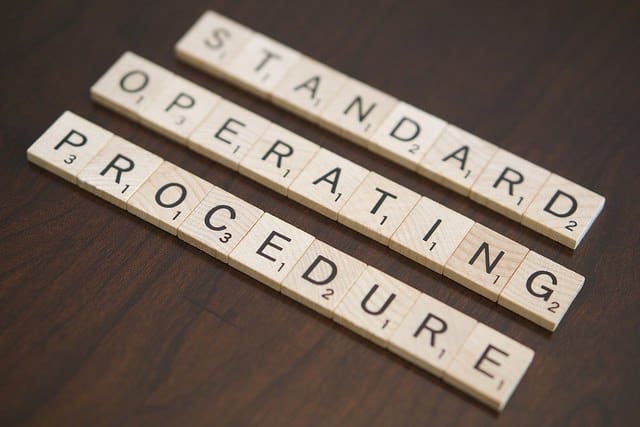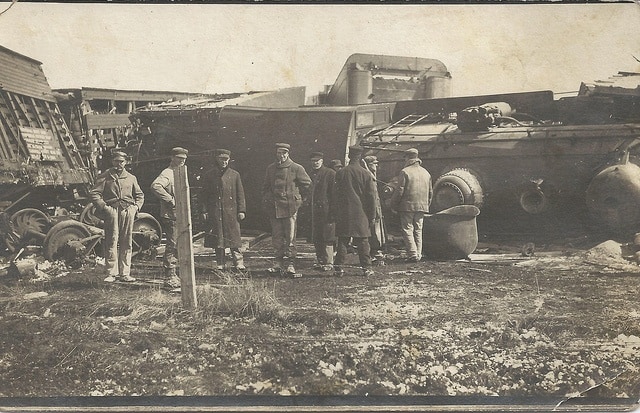Let’s say you’ve been paying attention to all of the small business advice blog posts from our answering service team and you’ve taken some of our advice. Perhaps you’ve mastered answering the phone correctly, found good employees, and hired them. What’s next? Well, you’ll need to onboard those new, quality employees of yours. Training employees well is crucial to your small business.
Why is training important?
New employees must be trained properly for a number of reasons. These include, but are not limited to:
- Better work output
- More job satisfaction
- Reduced stress
- Increased confidence in job proficiency
- Higher commitment to the organization
- Reduced call wait times for your customers
- Consistent level of service
SOPs
What are SOPs?
SOPs is shorthand for Standard Operating Procedures. SOPs ensure that when situations occur, there is a cross-company expectation of what will happen as a response. This creates consistency within your company.
Why do you need SOPs? It started with a train wreck. Literally.
Standard Operating Procedures became a necessity after The Great Train Wreck of 1856. In short: one train was running very late and on the same track as another train heading in the direction that the other was coming from. It sounds like a math problem, but it happened! The trains collided, fifty lives were lost, and one hundred people were injured. There was a public outcry calling for the railroad companies to implement standard procedures that would prevent a tragedy like this from occurring again.
After the railroad companies adopted SOPs, other businesses followed suit. From large companies, to mom & pop shops, people wanted to know that with whatever happened, employees would know the right steps to take. Not everything that comes up will be a life-or-death situation like The Great Train Wreck of 1856, but it still taught business owners an important lesson in consistency.
What your SOPs should consist of
- An organizational chart
This is a road map of the chain of command and who is running what within the company and it creates accountability for each employee. Everyone will know what they are responsible for and who oversees their department.
- Detailed instructions
Someone in-house and familiar with your company should write detailed instructions for tasks that will be done more than once. Don’t try to dress it up–use plain language so that the instructions will be easily understood.
- Checklists
It’s much easier for your employees to follow through with strategies and routines with a checklist. If you want added impact, the checklists should consist of measurable tasks. An example of a measurable task would be ‘follow up with five potential sales leads daily’ rather than one that isn’t, like ‘make sales calls.’
Training Employees Begins Before their First Day
Training employees doesn’t begin on their first day of the office. First impressions are everything. You should set the standards high from the beginning if you’re expecting a hard worker. How do you do that? By setting your employee up for success.
Discuss Expectations with their Direct Supervisor
The best way to manage expectations is by making them very clear from the beginning. Speak with their supervisor and find out exactly what they are expecting. This way, this information can be clearly communicated to the employee.
Prepare their Workstation
This includes their desk, of course, but also creating accounts and log ins for all intranet and web apps that they will need to get their job done. Their desk, chair, phone and office supplies should be set up and ready. If you want to wow them, welcome them with a branded mug or pens.
Points of Contact
It’s difficult meeting a huge batch of people on the first day of work along with all of the new tasks you’re given, you’re somehow expected to remember the names and faces of the thirty other people you’ll be working with! It’s a lot of pressure.
Give your new hire a cheat sheet with a list of the people’s names and roles with whom they’ll need to be in contact with the most. That’ll lower the pressure and give them something to look at as a reminder at a later time.
Get your Paperwork in Order
…and not just the tax forms. Surely you plan on asking your new hire to fill out some of the necessary paperwork. But use this opportunity to also provide resources that may be helpful to them in the future. Things like annual reports, marketing materials, the company intranet and website will all be helpful for the new hire to better understand the company. And, don’t forget your prepared SOPs!
Be sure to not give them too much information on the first day. You don’t want to overwhelm them!
Training Employees on the First Day
Give the Grand Tour
Don’t just show them to their desk. Show them around! Think of the less obvious places that they may need to know of, and take them there. Don’t just stick to showing them the cafeteria. Think of the less obvious things, like the closest place to get a good cup of coffee and the mail room.
Set up a Lunch Date
Don’t make them eat lunch alone! Set up lunch with one of their colleagues. This way, they’ll have someone on their team that they’ve had a connection with. This person can be their main point of contact for smaller questions that haven’t been answered over the early course of training.
Check Up
Don’t just leave the employee to sink or swim. Make yourself available throughout the day to be sure that they are doing well and that they have all of the tools that they need.
Training Employees During the First Few Weeks
Adjust the Workload
After the initial first day jitters and meet and greets are complete, you may be tempted to expect your new hire to go ahead and get into the swing of things. But, hold tight. Every person’s tolerance for new information and tasks is different. Pay attention to the reaction to the workload you give them, and increase incrementally accordingly. Being overwhelmed at a new job is scary!
Say Something!

In fact, don’t let this practice end as the training period does. Check in with your employees frequently to see if there’s anything you can do to make them happier in their position or to facilitate more efficient production.
Apply this to your small business
If you want consistently high quality of output from your employees, you have to do some of the prep work. You’ll need to prepare their supervisor, their workstation, and the rest of your staff in order to set them up for success. You’ll also need to give them enough information about the company and enough praise so that they will feel confident about their place and their output. And, the work doesn’t stop there: you’ll need to consistently check in with them to make sure you’re available to give them what they need so they can get the job done to the best of their ability.
Now, give this a try:
Follow all of these steps in onboarding and training employees, and you should have a consistently good team to work with. If you want this information in a quick checklist format, check out this employee onboarding checklist.











